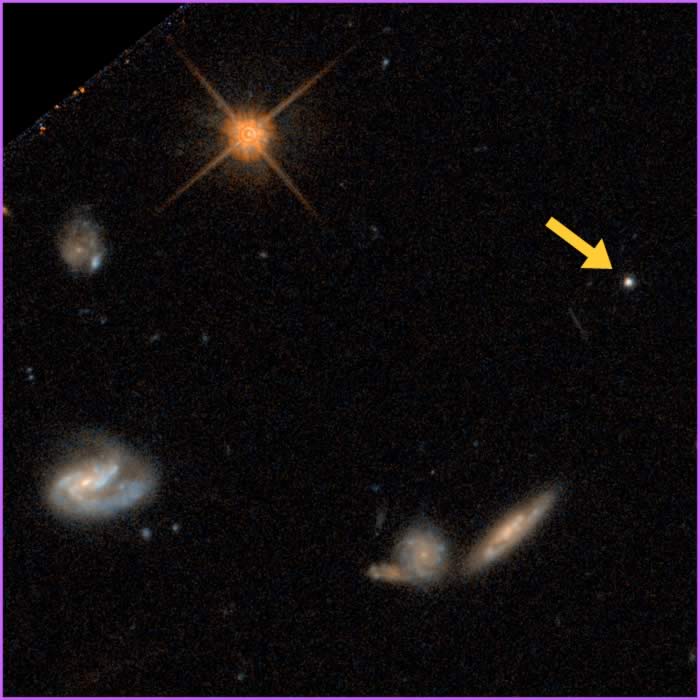 |
 |
The Highest Redshift Object in AEGIS: A Quasar at z = 3.43 The little white dot shown in this image looks like it might be a faint foreground star. However, it is a powerful source of X-rays, the only X-ray source in this image. Furthermore, the DEEP2 spectrum of this object reveals that it has the largest measured redshift of any object in AEGIS, meaning that it is the most distant source identified in the survey. With a redshift of 3.43, the light that we see from this object has taken more than 11 billion years to reach us here on Earth, which means that it was emitted less than 2 years after the Big Bang. We are seeing this object at a time when the Universe was a fraction of its current age. This little dot is a "quasi-stellar object", more familiarly known as a "quasar". You can see how the name originates: it looks like a star (it is "quasi-stellar") but in fact is not. Even with the Hubble Space Telescope, we cannot see individual stars any farther away than the very nearest galaxies, let alone at such immense distances. A quasar is an enormous black hole---as much as 10 or 100 million times as massive as the Sun---which is surrounded by a disk of gas. The gas orbits the black hole and is gradually pulled in by the gravity of the black hole. This disk is called an "accretion disk" and although it is very large by human standards, it is tiny compared to the size of a galaxy. As the gas in the accretion disk spirals in toward the black hole, it gets very hot and radiates large amounts of energy in the form of X-rays. It is the dazzling light from the accretion disk that we see here in this image, 11 billion years after the light was emitted from the disk. At such a large distance, the size of the disk is negligible, so it appears as a star-like point source of light. You can explore both visible light and X-ray images of this field and the rest of AEGIS using our multiwavelength Google Sky tool! |